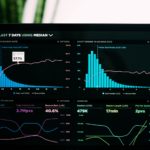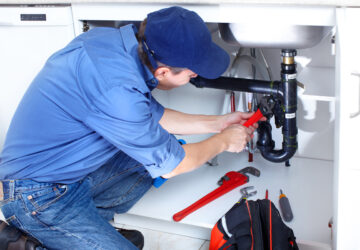Search Engine Optimization is a race in the truest form of the word.
If you start lagging, pretty soon your competitors are going to beat you down. Worse off, if your site’s loading slow, your customers might get frustrated and switch to the competitors.
It’s best to take these two sentences with a grain of salt.
When it comes to eCommerce, and even general websites, a slow loading website leads to a rise in bounce rates, reduced traffic, poor user engagement, and a massive hit to your company’s bottom line.
Website load speeds are the part and parcel of the modern web experience.
In this article, we’ll be talking about eCommerce load speed optimization. More specifically, we’ll look at how to optimize a Shopify store.
Why did we choose Shopify? Well, there are plenty of articles written comparing Shopify with WooCommerce and Magento but not enough about optimizing the speed of Shopify. That’s the only reason.
Anyways, reading the tips mentioned below and applying them to your website will prove monumental in gaining the upper hand in the digital world.
So, let’s begin.
1.Analyzing Performance Goes a Long Way
Let’s break down the various ways in which you can gauge and improve the performance of your Shopify store.
Google PageSpeed Insights
Using the Google PageSpeed Insights tool, you can see which areas of your website need improvements. It’s a handy tool that gives you plenty of good suggestions and improvements to work with like:
- Image optimization
- CSS/JS minification
- Render blocking of CSS/JS
- Browser caching
- Server response times
- Webp compression for scaled images
- Reduction landing page
- Avoid landing page redirects
The best part about most of Google’s website tools is that they’re absolutely free. You don’t have to worry about purchasing any licences.
Mobile Page Speed Report
When it comes to optimization, Google suggests individuals to use the Test My Site tool to analyze whether or not the website is mobile-friendly.
All you have to do is enter the URL of the website. Afterwards, Google performs a scan of your website and sends you the website report through email.
The GTMetrix Alternative
If you want to test your site at a more granular level, then GTMetrix is your best choice.
It’s a powerful tool that analyzes your website, and grades your site from A to F.
But that’s not the best part. GTMetrix’s suggestions are so well-written and organized that it’s easy to solve them with just a bit of research.
Once you’ve performed the scan of yourwebsite, it displays a performance report. It’s a list of all the places you’ve scored good and the places you’ve scored bad. To gain more information on how you can fix it, just click on the problem’s drop-down menu and you’ll see the details of the problem. You can solve that problem through reading GTMetrix’s knowledge-base on the problem or Google around to find a solution.
All in all, we’ve observed personally that GTMetrix feels like a game. The more you improve, the better your grading.
Pingdom’s Speed Testing
The third alternative to page speed testing comes in the form of Pingdom. This free tool gives you tons of recommendations on how you can optimize your site’s speed.
So now you have three tools that can help you analyze your site performance. You can use all three or just stick to one whenever you’re planning on testing the site.
2. Utilizing AMP for Faster Load Times
AMP, short for Accelerated Mobile Pages, helps users create faster loading web pages for the mobile display. It’s a powerful, open-source framework.
Seeing as how the majority of eCommerce is conducted on mobile, it makes sense to optimize your store for mobile as soon as possible. AMP solves that problem by helping you speed up the creation of your mobile store.
FireAMP and RocketAMP are two powerful apps on the Shopify App store that help you create an optimized mobile version of your website.
Here’s Shopify’s quick guide on how you can build pages with AMP.
3. Image Compression
On Shopify, you can add images in three formats: JPEG, progressive JPEG, PNG, and GIF.
Image compression is the cornerstone of all optimization strategies. It also happens to be the easiest one. For image optimization, make sure to use images that are compressed and scaled perfectly.
To compress images for Shopify, we would recommend using tools like TinyPNG for PNG files and TinyJPG for JPEG files. Both are very useful tools that compress image formats without losing the quality.
These websites are meant for new images that you’re about to upload. For images that are already uploaded, you can use an extension like Crush.pics. It would automatically compress any older image without losing most of its quality.
4. Installing Responsive Themes
The focal point of eCommerce optimization revolves around the theme. If your theme is optimized from the get-go, it would lessen the burden on your site. Here are some suggestions you should take into account before installing a theme:
Look for a theme that promises speed and responsiveness.
They are the major key in ensuring superior performance from the very beginning.
Ensure that your theme is updated to its latest version. Developers update themes for security and speed so always keep that mind. If you don’t update your theme regularly, then it could mean not only a decrease in performance but other security-related issues.
Never use a nulled theme.
Sure, you might get some premium features along with the theme, but what you’re trading for these features is your site’s security.
Mostly, the nulled themes are pirated and bugged to the core. Your site’s integrity, your hosting account subscription, and your overall digital legitimacy can take a serious hit if you install that theme.
Always look for reviews of the theme.
If the theme has a majority of negative reviews, you’re better off not using it. As a best practice, be thorough with your research.
More often than not, you will find “planted” or fake reviews praising the theme. It’s always best to look beyond those reviews and find negative and positive reviews that focus on a particular issue related to the theme.
If you follow these steps accordingly, you’ll be well on your way towards ensuring a fast website that doesn’t lag under pressure.
5. Reduce the HTTP Requests
The total number of URL (HTTPS) requests your site makes is important in ensuring speed.
As a primer, you can perform the following actions to reduce HTTPS requests:
- Minify your CSS scripts or make them inline
- Combine your JavaScript code for faster crawling
- If you’re using design heavy images, reduce their use
- Utilize CSS image sprites
- Try and convert image code into Base 64.
- Minimize the use of social media buttons
6. Organize All Your Tracking Code with Google Tag Manager
When using Google Analytics, you typically use plenty of tracking codes to map the activity on your site.
From conversion trackers to AdWords, remarketing tags, and others. While they’re very useful, they also consume some time when loading. To avoid slowing down the performance of your store, you can install Google Tag Manager for your site to ensure that all your website’s tracking code is organized.
Shopify’s article on Google Tag Manager is a good way to start configuring the tool to your website.
7. Use Clean and Authorised Apps
Using too many apps in your Shopify store can also cause problems of slow loading speed. So, try using the ones that are clean and do not cause extra burden on your store. Whatever apps you are using like marketing app, conversion apps, apps to increase the loading time etc. make sure you are using the authorised apps. For an example, Tada is a great small business marketing app that not only helps with increasing the store conversions but also make sure that your store won’t have any negative impact. Just like Tada, there are various apps available that will help with more than one objective.
Conclusion
You’ve reached the end of this article. Congratulations. Our final words to the readers will be reiterating the introduction.
Optimization is a race. If you don’t have the correct strategy, then you’ll be left behind really quickly. So always be proactive.
Another thing to take into account is that it’s not a one and done process. After a while, everything starts to become slow. This is why it’s important to keep monitoring the performance of your website for signs of wear and tear.








